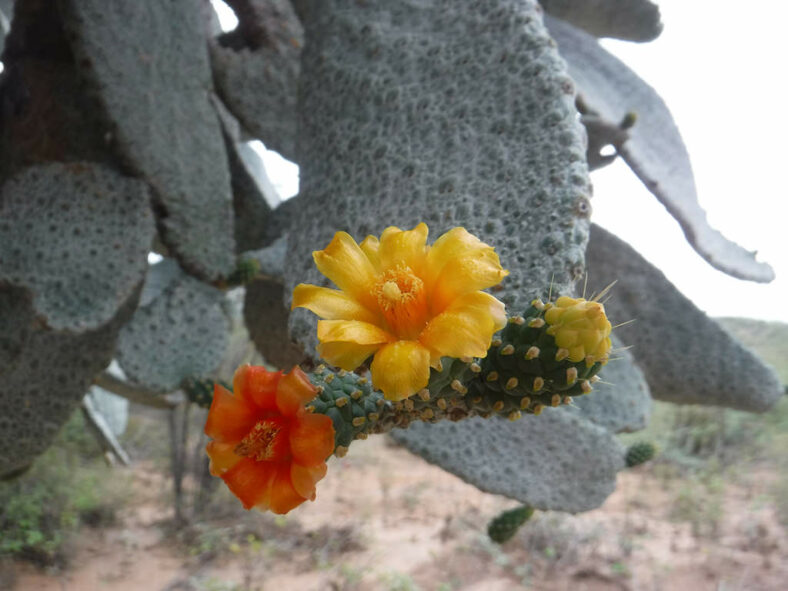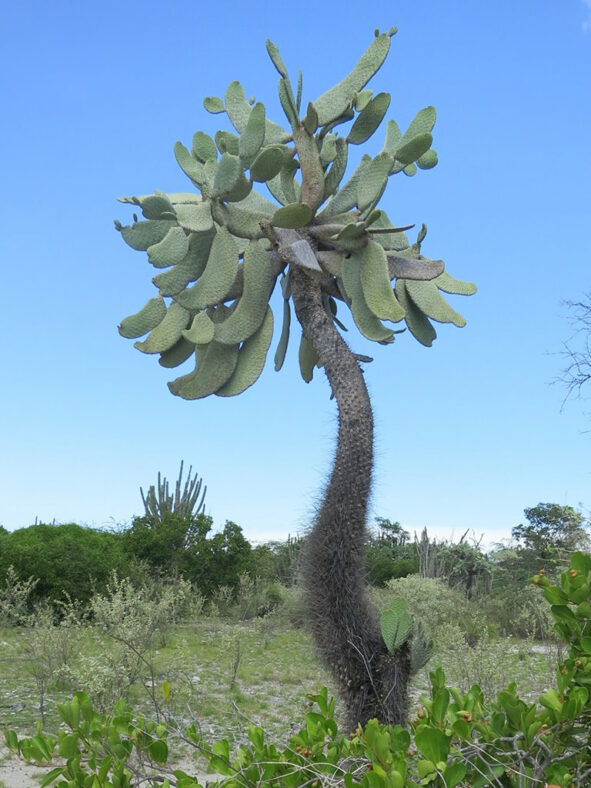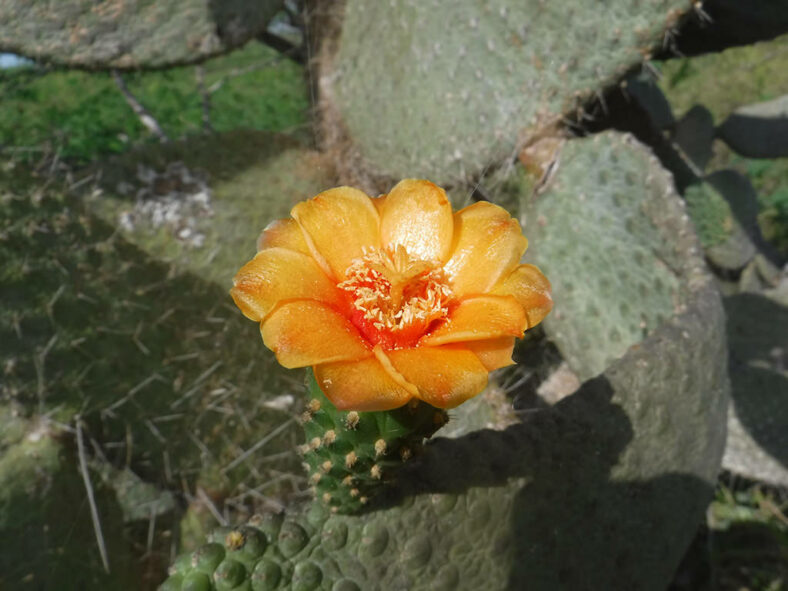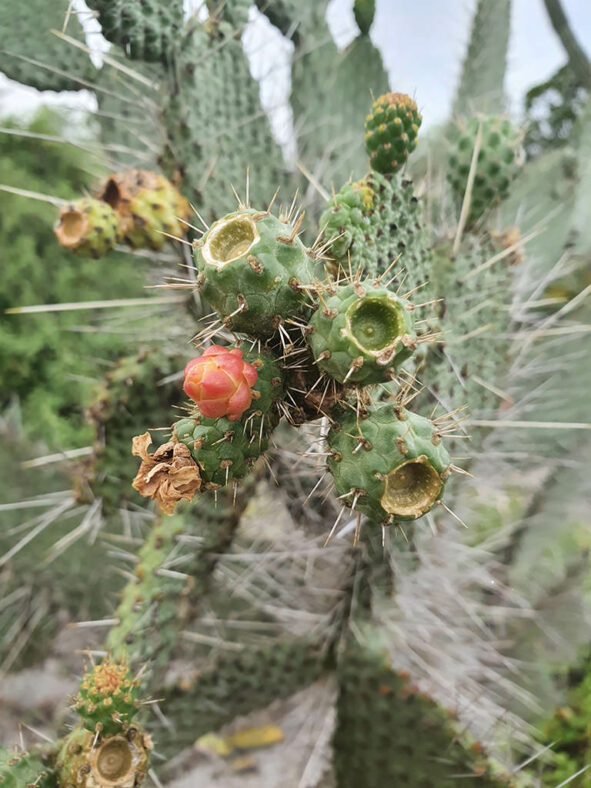Consolea moniliformis was first described as Cactus moniliformis by Carl Linnaeus in 1753 in his book "Species Plantarum". In 1926, Alwin Berger reclassified it under the genus Consolea.
Scientific Name
Consolea moniliformis (L.) A.Berger
Common Name(s)
Necklacelike Pricklypear
Synonym(s)
Cactus moniliformis, Cereus moniliformis, Consolea moniliformis subsp. moniliformis, Nopalea moniliformis, Opuntia moniliformis
Scientific Classification
Family: Cactaceae
Subfamily: Opuntioideae
Tribe: Opuntieae
Genus: Consolea
Etymology
The specific epithet "moniliformis" (pronounced "mon-il-lee-FOR-mis") means "moniliform, characterized by or having a chain-like series of bumps, swellings, or joints; resembling beads on a string or necklace" and probably refers to the reticulate patterning of the surface of the stem segments.
Origin
Consolea moniliformis is native to the Greater Antilles, on Cuba, Hispaniola (Haiti and Dominican Republic), and Puerto Rico (Mona, Desecheo, and Culebra). It grows at elevations from sea level to about 165 feet (50 m).
Description
Consolea moniliformis, formerly known as Opuntia moniliformis, is a tree-like cactus with an upright, cylindrical trunk and ascending branches consisting of elongated segments called cladodes. It can grow up to 13.1 feet (4 m) tall, while the cladodes can reach up to 15.7 inches (40 cm) in length and 5.2 inches (13 cm) in width. The spines are needle-like, yellowish to grey, and can grow up to 1 inch (2.5 cm) long on cladodes and up to 4.8 inches (12 cm) long on the trunk. The woolly areoles typically bear 3 to 8 spines and a tuft of brown glochids. Sometimes, the spines can be absent.
During late spring through summer, Consolea moniliformis produces flowers that can reach up to 2 inches (5 cm) in length and 1 inch (2.5 cm) in diameter. The flowers start as bright orange, fade to magenta the next day, and finally turn bronze. The spiny fruits are green and obovate and can grow up to 2.4 inches (6 cm) long.

How to Grow and Care for Consolea moniliformis
Light: Consolea moniliformis thrives in full sun, but some shade during midday and afternoon can prevent sunburn in hot climates. When grown indoors, a window that receives sunlight for 6 hours a day works best.
Soil: This cactus requires a well-draining soil mix. You can use a commercial cactus potting mix or create your own.
Temperature: Consolea moniliformis is highly tolerant of high temperatures and prefers cooler temperatures in winter. It grows best in USDA Plant Hardiness Zones 9b to 11b, with average minimum winter temperatures ranging from 25°F to 50°F (-3.9°C to 10°C).
Watering: From spring to fall, water moderately and let the soil dry out completely before watering again. In most areas, rainfall will be enough for established plants. If potted, never let the container sit in water. During the winter, suspend the watering.
Fertilizing: Consolea moniliformis does not need fertilizer when planted in the ground. However, if grown in a container, it will benefit from fertilizing during the growing season. Apply a water-soluble fertilizer. Suspend feeding during the winter when the plant goes dormant.
Repotting: Repot only when the cactus becomes potbound or is too large and unstable in its container. Choose a slightly larger container with drainage holes at the bottom. The best time for repotting is late winter or early spring.
Propagation: You can propagate Consolea moniliformis by stem segments or seeds. The easiest method is using stem segments, which yields faster results. Take stem segments in early summer for best results, and sow the seeds in late spring.
Learn more at How to Grow and Care for Opuntia.
Toxicity of Consolea moniliformis
Consolea moniliformis is not toxic to humans or pets. However, it is best kept away from pets and children as its spines and glochids may cause skin irritation.
Links
- Back to genus Consolea
- Succupedia: Browse succulents by Scientific Name, Common Name, Genus, Family, USDA Hardiness Zone, Origin, or cacti by Genus
Photo Gallery
Click on a photo to see a larger version.


